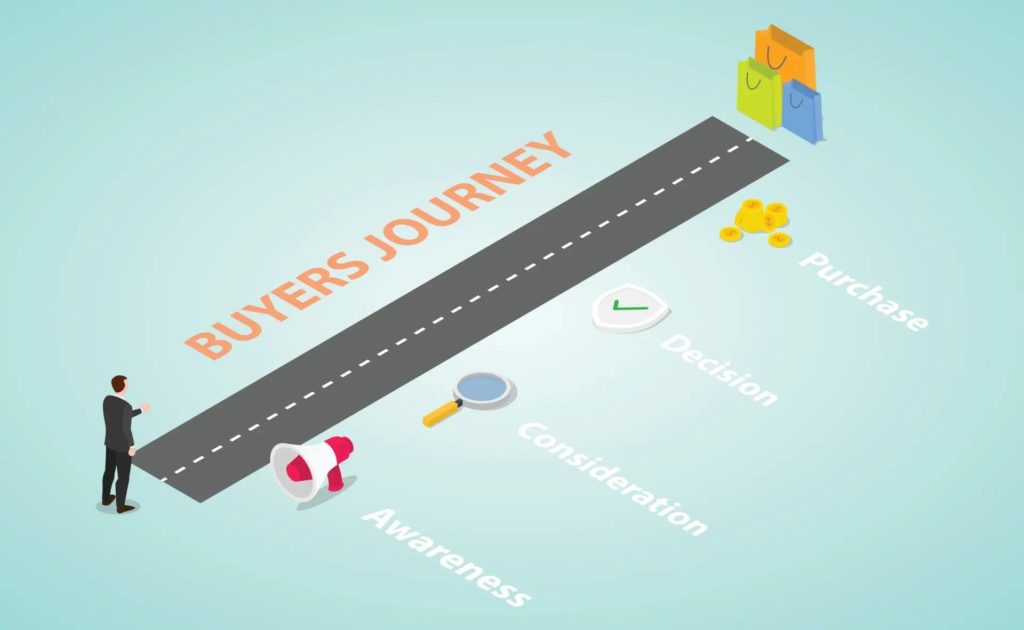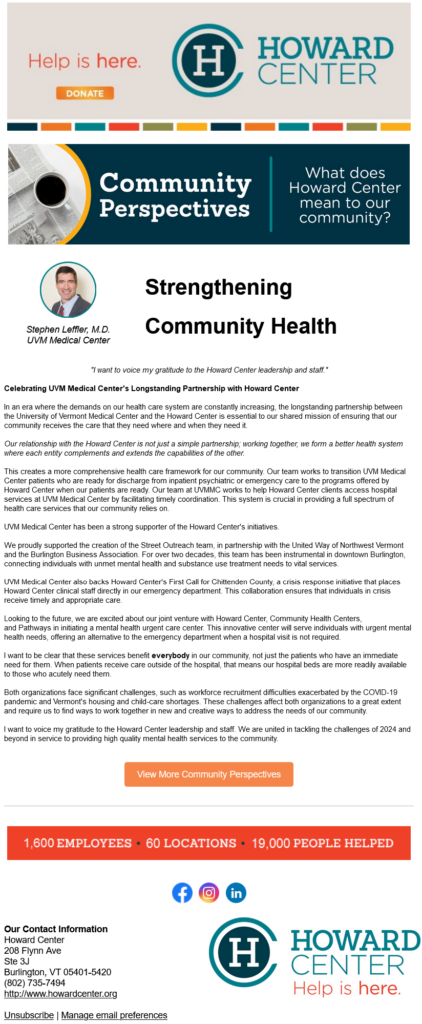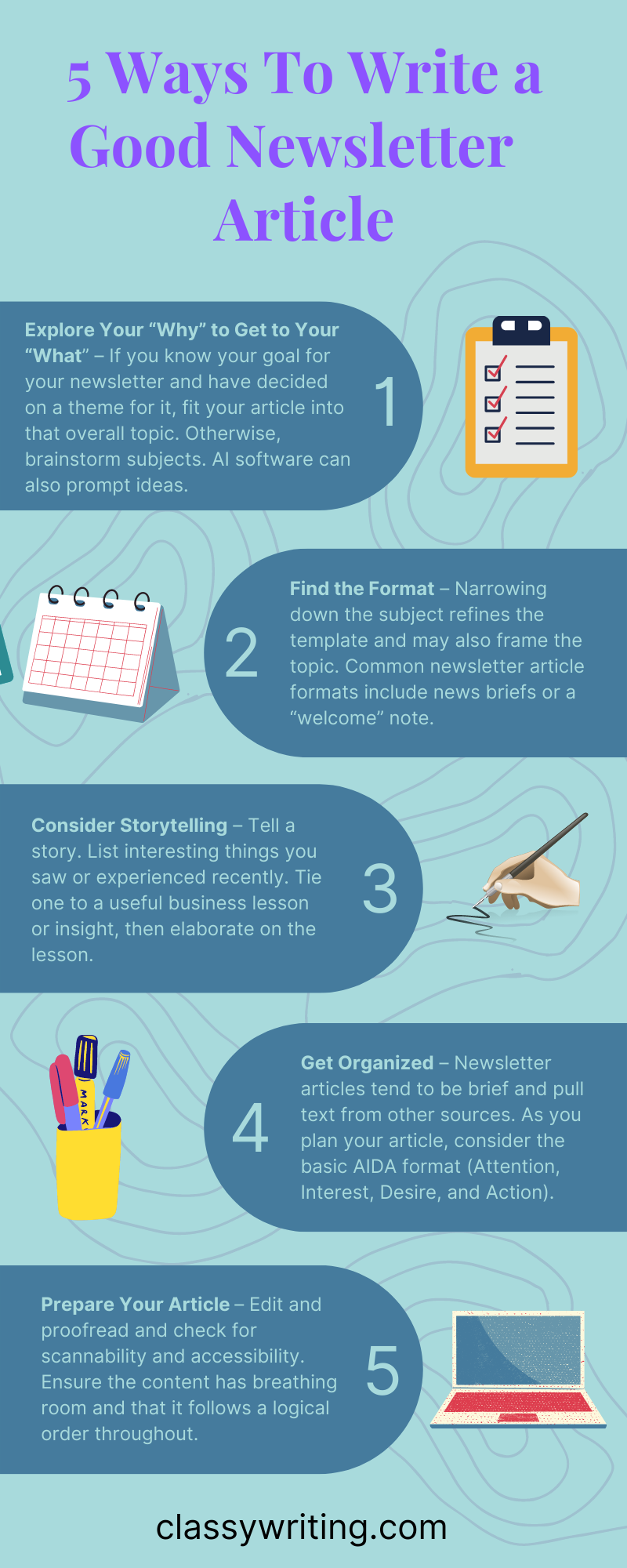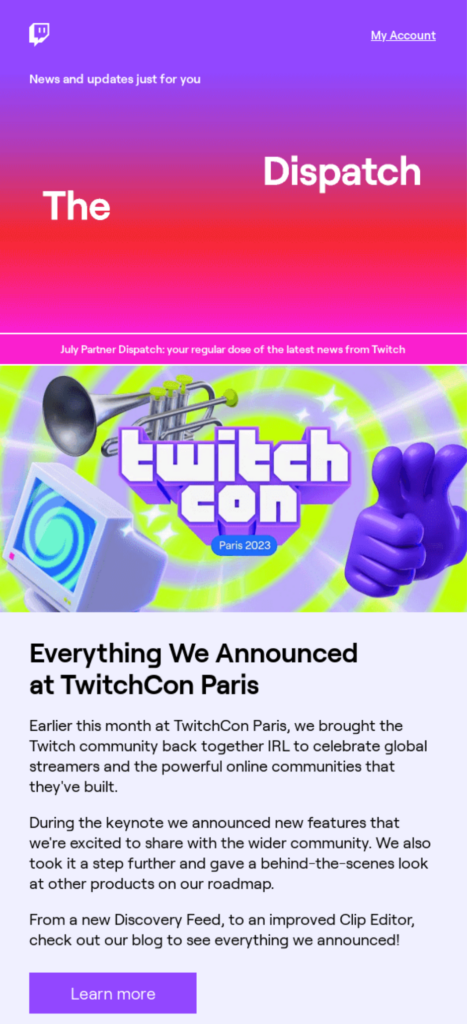Knowing how to write an article for a business newsletter well can boost engagement, response rates, and brand awareness. Adding your brand voice and personality to the content will help your business e-newsletter stand out.
This article assumes:
- That you want to write a short e-newsletter article.
- That you know your target market.
Let’s walk through five steps, from potential topics (if you need one) to the writing process from start to finish. See the video below for key highlights.
Writing a newsletter can be time-consuming. If you don’t know how to make a newsletter article, consider my email marketing packages or get a free audit.
Table of Contents
- How Do You Write an Article for a Company Newsletter?
- Is a Newsletter an Article?
- What’s a Business Newsletter Article Example?
- How to Write a Short Article for a Business Newsletter
- What’s a Business Newsletter Article Example by AI?
- How to Write a Newsletter Article About an Event Template
- How Do You Write a Newsletter Article About an Event?
- How Do I Write an Internal Newsletter Article?
How Do You Write an Article for a Company Newsletter?
How to Write an Article for a Business Newsletter: Quick Takeaways:
- Explore Your “Why” to Get to Your What: If you lack ideas, research any existing customer data or what’s trending, brainstorm, or try AI. To refine the topic, follow the different buyer’s journey stages: Awareness, Consideration, and Decision-Making.
- Finding the Format: Choose the right format for your article, such as an editor’s note, news item, or blog teaser. Keep the format simple and focused to save time and ease writing.
- Keeping It Interesting and Useful to Hook Readers: To help readers identify with you, tell a story based on one of your experiences. Tie it to a useful business lesson or insight, then elaborate.
- Getting Organized: Consider your article’s structure. When you write, follow common sense guidelines. If you use AI content, add your brand voice, style, and tone. How to write a newsletter article about an event: remember the 6 “W’s” and the “H.” For internal articles aspects like your audience, purpose, tone, and style.
- How to Write a Company Newsletter Article for Adoring Fans: Edit and proofread and check for scannability and accessibility.
For more highlights, catch the condensed version of this article.
1. Exploring Your “Why” to Get to Your “What”
Businesses usually send newsletters to get more leads. If you know why you’re sending the newsletter and have already decided on a theme for it, fit your article into that overall topic.
Otherwise, to find a topic for a one-article newsletter, brainstorm ideas, use article templates to form one, or consider telling a story. Or jump ahead and get organized to start writing.
To brainstorm topics, consider what will appeal to your readers. Look at any existing customer data, such as:
- Sales records
- Reviews
- Website analytics
- Social media metrics
What’s currently trending in your niche? Also, ponder what people tend to ask, complain, or rave about. If you’re still not sure what to feature, keyword research, questions on social media, and customer surveys can yield insights.
GatherContent suggests more ways to find audience-relevant content ideas.
Artificial intelligence software might save brainstorming time. Because of its current limitations, if you use it, check the results. Will the content connect with customers? It might have nothing to do with your target market or your goals. If you decide to use AI, the following advice can screen unsuitable topics.
Is a Newsletter an Article?
It can be.
Fenwick suggests an e-newsletter should average 300 or fewer words total, which can save time and maintain engagement. Constant Contact has found that 20 lines of text — or about 200 words — results in the highest click-through rate for many industries.
Many e-newsletters you get are probably longer. (Constant Contact concludes an e-newsletter should be “as long as it needs to be.”) One newsletter article that forms the entire email may also be at or near 300 words. Another option, for longer articles, is to post a summary with a link back to the full piece.

To enhance lead generation and narrow your topics, as HubSpot recommends, link your article goals to the different buyer’s journey stages: Awareness, Consideration, and Decision-Making.
- Awareness: Introduce your business, staff, mission, and offerings. Highlight new products or events to familiarize customers with your brand.
- Consideration: Customers are thinking about buying and comparing options. Provide information that helps them decide, like a “how-to” article showcasing a product or service.
- Decision-Making: Customers are ready to buy. Show them the benefits of choosing your business to influence their decision and encourage them to contact you.
This method of content marketing subtly sells to customers through informing them about products and services.
Get a Free Easy 5-Step Business E-Newsletter Template
2. Finding the Format: Another Way to Generate an Engaging Topic
Knowing your goal and the buyer’s journey stage leads to your subject matter. Narrowing down the subject refines the article template. The format may also frame the topic.
What’s a Business Newsletter Article Example?
Common newsletter article examples include:

- An editor’s or “welcome” note: example: Sundvick Legacy Center
- A short news item: sample: Dwyer, Spino & Goncalves newsletter
- A teaser for a blog post with a link to the full piece: examples: DFD Russell Medical Center newsletter; Aviva Senior Living newsletter; HORNE newsletter
The format of these articles is also simple, making them easier to write with little planning, saving you time and energy.
Examples of company newsletter articles include the Howard Center e-newsletter (pictured), which features one nearly 500-word article.
It’s among several good healthcare newsletters. Learn more in What Are The Best Health and Wellness Newsletters?
How to write a newsletter article sample from a law firm: The Law Office of Antoinette Bone: Estate Echos. This e-newsletter features one 400-word article aimed at fellow advisors or consultants.
Often, e-newsletters feature one main article, then snippets of text with links to more information.
Explore: writing a newsletter article template.
“Consider leveraging content curation. Not every piece of content needs to be created from scratch. Sharing relevant industry news, case studies, or insights from thought leaders can add value to your newsletter without the heavy lifting of original content creation. Tools like Feedly or Pocket can help you gather and organize relevant articles and information.”
Gabrielle Yap, Senior Editor, Carnivore Style
Curata reports that leading marketers use a mix of 65 percent created content and 25 percent curated content. Curation saves time (and money) and helps you keep producing engaging content consistently.
3. Keeping It Interesting and Useful to Hook Readers: Consider Storytelling
Remember that your piece should be useful, or in marketing terms, offer value. To help readers identify with you, tell a story. Michael Katz, who teaches professionals how to understand marketing, details his storytelling method effectively.
To find good stories, list interesting things you saw or experienced recently, such as a colorful rainbow or a fun trip. Tie one to a useful business lesson or insight connected to your expertise. Then describe the experience, elaborating on the lesson. Joey Havens of the accounting firm HORNE does this well.
“It can be helpful to use AI. One of the most effective ways to get people to engage with your e-newsletters is to personalize the content and ways you address the individual recipients. But this is very time consuming and difficult to do all on your own. AI can be used to create segmented lists and personalize messages in a fraction of the time.”
Dr. Jerry Friedman, Doctor of Dental Surgery, North Jersey Oral & Maxillofacial Surgery
Corporate Visions research shows that emails personalized to certain industries had 24 percent higher click-throughs and 50 percent more scheduled meetings. According to MailModo, AI can help you segment lists and personalize emails.
If you need inspiration, AI offers a head start. Directing it to tell a story for a newsletter in your industry will produce content to tailor to your business. You can even ask it to mimic other writers’ styles.
Edit the output because other people might tell the same story. And depending on your instructions, if the story doesn’t apply to your business, it will spin some fiction.
4. Getting Organized: Focusing on the Structure and Writing the Article Effectively
Many business newsletters feature around 300 to 500 words of content. Newsletter articles tend to be brief and pull text from other sources, like articles or landing pages.
Business customers can be too busy to spend ten minutes reading your newsletter. Consider the length wisely while you keep your audience and what you might know about them in mind.
AI software may shortcut outlining, especially if you seek inspiration. For example, ChatGPT 3.5 created the outline below for this article.
If you’re weighing whether AI could help you, compare ChatGPT’s outline to the structure of this post, which I wrote without AI. If I had given it a more specific prompt, ChatGPT might have taken a more creative approach.

AI-generated content tends to state the obvious and sometimes lacks depth or interesting takes on a subject. Your unique perspective, tone, and style create distinctive writing. Double-check any facts or sources AI-created copy references and edit as necessary.
When you structure your piece, if it’s a “listicle,” number each step to simplify the format and scannability. Otherwise, as Chamaileon suggests, consider the basic AIDA (Attention, Interest, Desire, and Action) format.
As you write, heed the guidelines from the AMA Handbook of Business Writing.
How to Write a Short Article for a Business Newsletter
How to Write a Good Newsletter Article From Start to Finish: Key Takeaways
- The beginning: How will you build attention?
- The middle: How will you keep it?
- The end: How will you inspire people to act?
The beginning: your opening sentence or paragraph — how will you build attention? Get to the point powerfully. State an interesting fact, quote someone, or take us into the middle of a scene.
- Example #1: Information articles: This Sundvick Legacy Center newsletter features a short editor’s note. It starts with the fact that October is National Estate Planning Month and leads into a paragraph about why it’s a good time to consider estate planning.
- Example #2: Storytelling: Set the stage. In this newsletter, Joey Havens begins with a description of a “blue and white object laying just in front of me” in a hotel lobby.
The middle: how will you build on the interest and desire you’ve generated at the start? Add what readers should know next to encourage them to read on. Use transitions to tie ideas or paragraphs together smoothly.
- Example #1: Informational articles: The Sundvick Legacy Center note leads into a statistic. They then build on that statement: “That means creating a comprehensive plan tailored for you and your family…”
- Example #2: Storytelling: Joey signals he has reached the middle of the piece by transitioning into what he mistook the object for and what it was.
The end: how will you inspire people to act? Summarize any key points. If your goal is to gain feedback, ask a question.
Use a call-to-action (CTA) to entice readers to contact you or to visit a blog or a landing page. Each year, email service provider MailModo publishes its State of Email report, which surveys more than 150 email experts. Their 2023 report states that CTAs with action verbs or featured offers were most effective for them. If you’re not promoting anything, close with a simple “farewell.”
- Example #1: Informational articles: The Sundvick newsletter note urges readers to take action before another year passes. They then encourage readers to schedule a consultation.
- Example #2: Storytelling: Joey ends his story by emphasizing that if we can’t see problems clearly, they can look bigger than they are. It’s better to wait to consider them with a fresh perspective.
Whether you start in the middle, write the end first or the beginning last, just write. You also don’t have to create your headline first; some writers save it for last. Whatever you do, don’t judge your writing. Listening to your inner critic can stifle your writing; you could start to read what you’ve written and begin editing, which is a “no-no.”
Why? Because often it’s better to let your words rest or to “sleep on them” and return with a clearer view later. It’s like buying a cut-glass vase and seeing when you brought it home that it’s chipped. The flaws may become clearer later when you’ve rested your mind and can examine your work thoroughly.

What’s a Business Newsletter Article Example by AI?
This is part of 5 Ways to Write With Style, an article I asked Google’s Gemini to write. I didn’t use its content in the article.
Its style differs from mine. I’m less enthusiastic, for starters. 🙂
5 Ways to Write with Style and Captivate Your Audience (Like a Boss!)
Ever feel like your business writing falls flat? You’re not alone. Many business owners struggle to craft content that’s both informative and engaging. But fear not, fellow entrepreneur!
Here are 5 powerful ways to inject style into your writing and turn those website visitors into loyal customers:
The piece is informative, however, the advice is found in similar articles. I aimed to find aspects of writing business owners might not always consider.
“You can’t go wrong by providing value to your readers. If you know your readers well and you have expertise that can help them solve some of their common problems, email newsletters are a great place to share that expertise. But make sure to provide content that is truly unique and informative. You want to make sure you’re offering value and not adding to the clutter.”
Kathy Bryan, EVP/Head of marketing, Electives
Though AI can write an article draft, it could produce a bland one that is a mismatch for you or your business. If you use AI content, as MarTech and SEMRush suggest, check facts or sources and edit it to suit your brand voice, style, and tone.
How to Write a Newsletter Article About an Event Template
When you describe an event, keep in mind :
- The six W’s:
- who
- what
- when
- where
- why
- wrap-up
- The H (“how”).
How Do You Write a Newsletter Article About an Event?

When you summarize an event, use a similar structure. Add quotes from the hosts, organizers, or attendees, along with the agenda and what you learned. Here’s a sample.
Reframe it as a “how-to,” highlight key takeaways, or try a first-person perspective.
Adding photos with captions helps readers visualize the event.
Encourage readers to attend future events and offer incentives like exclusive content or “early bird” discounts. Provide more information related to the event topic, like research or speakers’ websites.
How Do I Write an Internal Newsletter Article?
The steps for how to write an internal newsletter article are similar to those outlined above, yet focus more on your co-workers as the audience. Many of the topics to cover are like those in a newsletter for clients: news and announcements, upcoming events, co-worker/employee profiles, etc.
How to Write a Newsletter Article for Work: Points to Consider
| Feature | Internal Newsletter | Customer-Facing Newsletter |
|---|---|---|
| Target Audience | Employees | Potential Customers |
| Purpose | Inform, Engage, Motivate | Generate Leads, Promote Services |
| Tone and Style | Informal, Conversational | Professional, Informative, Engaging |
| Content | Company News, Achievements, Events | Industry Trends, Case Studies, Resources |
| Call-to-Action | Participate, Complete, Provide Feedback | Learn More, Download, Schedule Consultation |
More Resources:
- How to Write a Business Newsletter: Examples, Format, and Strategy
- How to Create a Professional Email Newsletter
- How to Write a Law Firm Newsletter
5. Preparing Your Newsletter Article for Adoring Fans
When you plan or edit your piece, consider these points:
- Scannability and Accessibility: Slice concepts into smaller parts for easier skimming with bullet points or numbers. Add images to break up text and make it more visually appealing. Ensure your content flows logically. Also, consider accessibility for people with disabilities: use short words, sentences, and paragraphs without jargon.
- Editing and Proofreading: polish your newsletter so it looks professional. Some ways to do that include printing it and reading it aloud and having others check it.
Harvard University Graduate School of Education offers more Email Newsletter Best Practices to help you create and prepare your messages for sending.
Now that you know how to write an article for a business newsletter, if your words are flowing, it will almost write itself. And when your masterpiece is ready, add it to your latest newsletter and share it on social media and elsewhere.
To stop stressing and start impressing everyone with your messages, get my free Easy 5-Step Business E-Newsletter Template.
- First published: April 3, 2023
- Last updated: June 11, 2024
